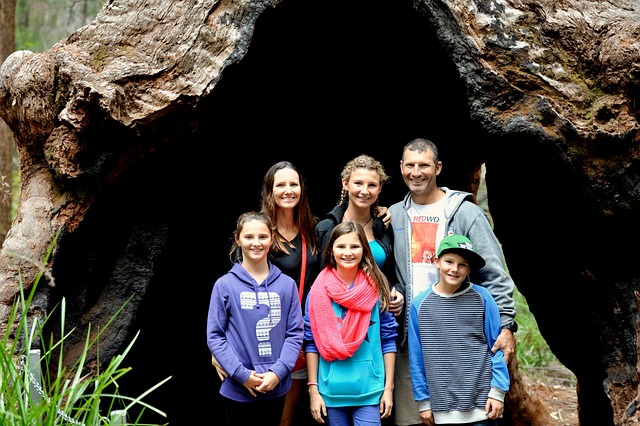In today's diverse world, building family networks requires open-mindedness, empathy, and adaptability. Designing inclusive spaces with varied seating, neutral language, and accessibility in mind creates a meeting place for all families, strengthening community bonds. Active listening, empathy, and honest dialogue promote strong connections among diverse members, ensuring every voice is heard. Supportive communities foster a sense of belonging, celebrating diversity while offering resources and practical advice. Organized groups online and offline empower families to navigate challenges together, enriching their journey towards stronger, more supportive family networks.
In today’s diverse society, understanding and supporting various family structures is essential. This article explores the creation of inclusive building family networks that embrace every situation. We delve into recognizing unique needs, designing welcoming spaces, fostering effective communication, and cultivating supportive communities. By implementing these strategies, we can build robust networks where all families feel a sense of belonging and connection. Let’s navigate this journey towards inclusivity together.
Understanding Diverse Family Situations: Recognizing the Need for Inclusivity
In today’s diverse society, families come in all shapes and sizes, each with its unique dynamics and challenges. Understanding this vast spectrum of family situations is crucial when building inclusive networks. Whether it’s a traditional nuclear family, single-parent households, same-sex partnerships, blended families, or intergenerational living arrangements, every family has its own narrative. Recognizing and embracing these differences is the first step towards creating supportive and welcoming environments for all.
The need for inclusivity arises from the desire to foster connections, ensure equal opportunities, and promote a sense of belonging. Building family networks that accommodate diverse situations require open-mindedness, empathy, and adaptability. By recognizing the value in each family’s experience, we can create spaces where every member feels seen, heard, and valued, ultimately enriching our communities and strengthening the fabric of society.
Designing Network Spaces: Making Everyone Feel Welcome
When designing network spaces for diverse family situations, it’s crucial to create an environment that welcomes and includes everyone. This involves thoughtful consideration of physical layout, decor, and activities to ensure no one feels left out or marginalized. Incorporate varied seating options to cater to different comfort levels and accessibility needs, making sure there are spaces for quiet reflection as well as active engagement. Use inclusive language in signage and communication materials, avoiding gendered or cultural assumptions.
The atmosphere should foster a sense of belonging and respect for diverse family forms. Encourage activities that promote interconnection and understanding by creating opportunities for shared experiences, storytelling, and open discussions. Ensure accessibility to technology for all participants, including those with disabilities, and provide resources for interpretation if needed. By making these considerations central to the design, you build a true meeting place where every family feels valued and represented, strengthening the bonds within building family networks.
Fostering Communication and Connection: Strategies for Effective Engagement
Fostering open communication is at the heart of building strong family networks that embrace diverse situations. It’s about creating a safe and supportive environment where every member feels heard, respected, and valued for their unique perspectives and experiences. Active listening, where individuals give their full attention to each speaker, can significantly enhance this process. By practicing empathy, showing genuine interest in others’ stories, and encouraging honest dialogue, family members can build deeper connections.
Effective engagement also involves recognizing and accommodating different communication styles. Some may prefer face-to-face conversations, while others might feel more comfortable sharing their thoughts through writing or art. Incorporating various methods, like group discussions, online forums, or collaborative projects, allows everyone to participate and contribute in ways that feel natural to them. This inclusive approach ensures no voice is left out, fostering a stronger, more cohesive family network.
Nurturing Supportive Communities: Building a Culture of Belonging
Creating supportive communities is at the heart of building strong and inclusive family networks. These communities provide a sense of belonging, fostering an environment where every family situation feels valued and respected. By encouraging open dialogue, active listening, and mutual understanding, we can create safe spaces for families to connect, share experiences, and offer support. This helps to break down barriers and promotes a culture where diversity is celebrated rather than feared.
Organized groups, both online and offline, play a pivotal role in this process. They provide platforms for families to share resources, exchange practical advice, and simply find comfort in shared experiences. Whether it’s through dedicated social media groups, local support meetings, or community events, these networks empower families to navigate challenges together, ultimately enriching their collective journey towards building stronger, more supportive family connections.
Inclusivity is key to creating thriving building family networks that embrace diverse situations. By understanding and recognizing unique family structures, designing welcoming spaces, fostering open communication, and nurturing supportive communities, we can build a culture of belonging where everyone feels valued and connected. These strategies empower us to create strong, vibrant networks that enrich the lives of all families, promoting harmony and understanding in our communities.
